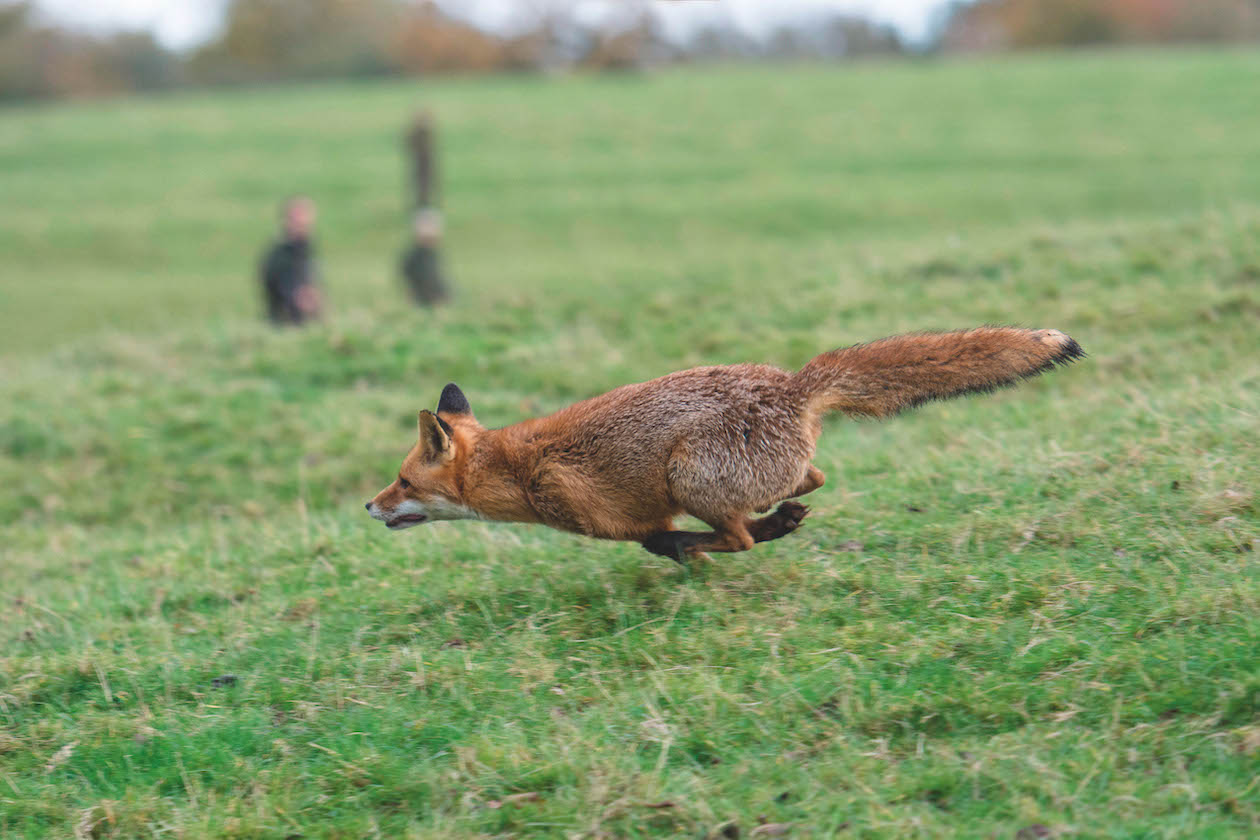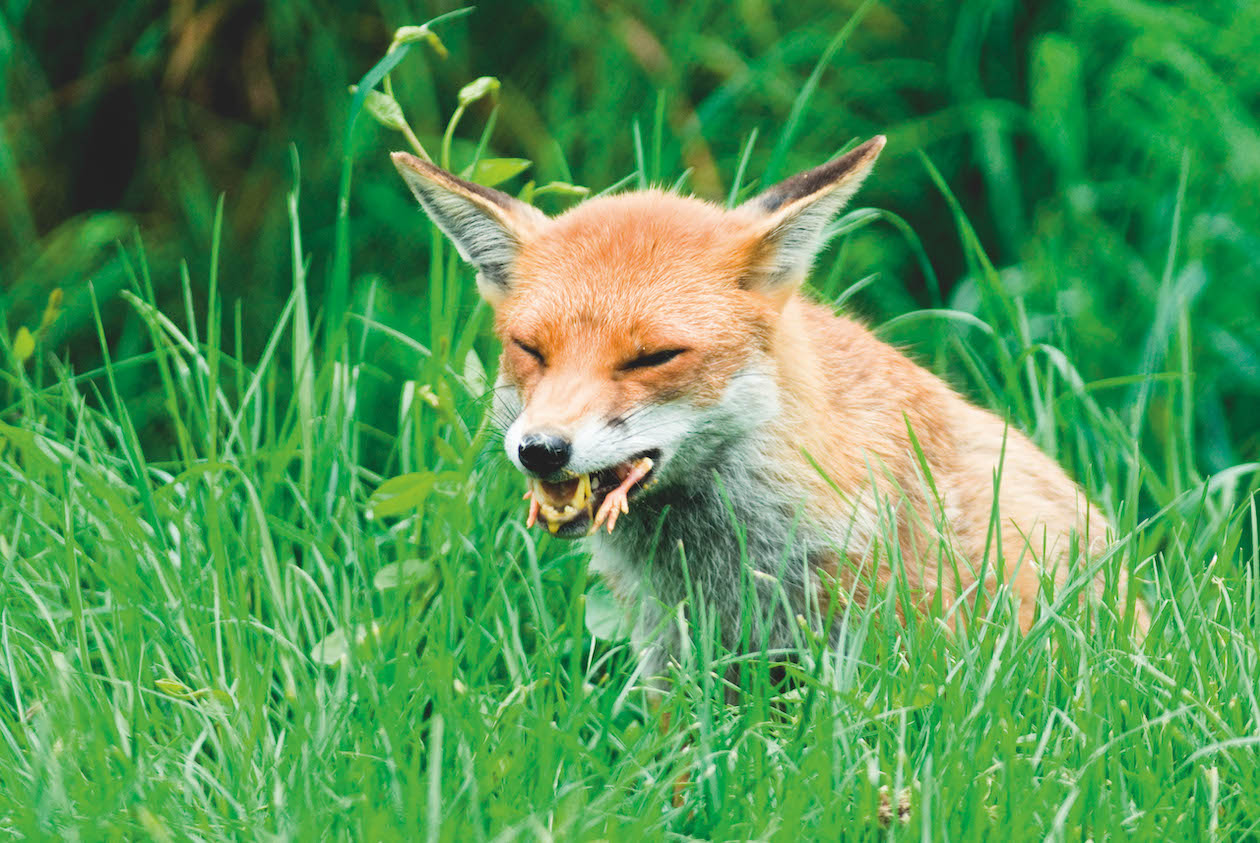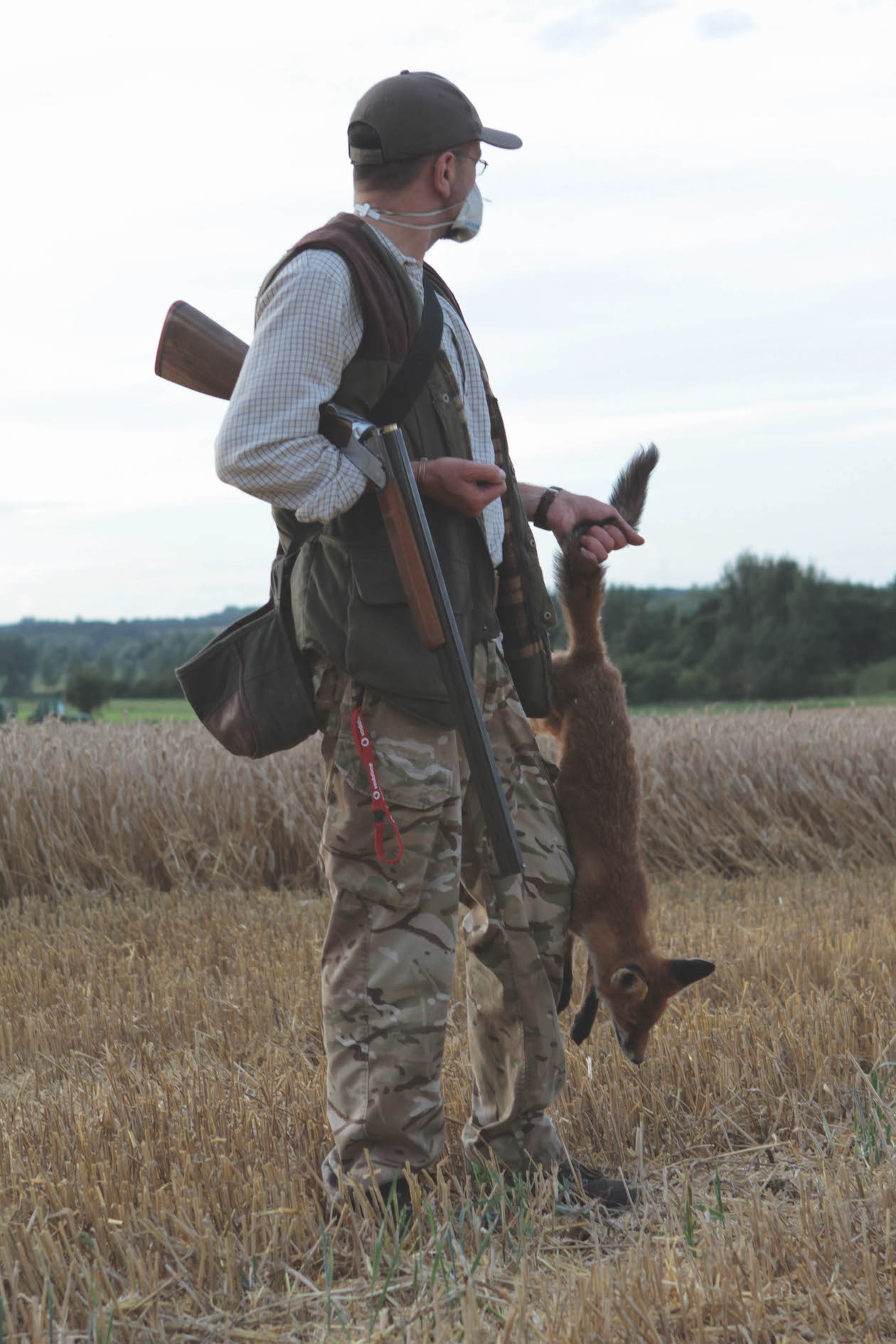Win CENS ProFlex DX5 earplugs worth £1,149 – enter here
How to stop a fox in its tracks
 2ABX72M fox running through a pheasant drive
2ABX72M fox running through a pheasant drive
Now is a good time to organise a fox drive to reduce numbers. Foxes eat more pheasant and partridge poults than all the other predators put together. You don’t always see what they kill and eat, but they are continually chipping away at them; now, when the hen birds are sitting, in a couple of months’ time when the poults go out, and at each and every opportunity they get for the rest of the year.
If you are a part-time keeper, it is difficult to put in the hours unless you live on site, and you shouldn’t run a snare line if you are not there to check them early, before work. Lamping and using a thermal — or a night sight — becomes more difficult as the cover grows, as does sitting out with a rifle at dawn and dusk. While there are always a few fields with stock in, you can have a scan round with the lamp and there is usually somewhere you can sit and wait to see if anything appears. But it is not ideal and without snaring your options are limited.
Fox drive
Fox driving is less popular than it once was, but it is still a great way of picking off the residents and you don’t need an army of people to do it. In fact, a fox drive tends to work better when there are fewer people, because there is less noise from the standing Guns and because it is easier to move from one place to another without unduly disturbing things.

A chick makes a bite-size snack for a fox but they will also take pheasant and partridge poults.
Creep
Little drives tend to work better than big ones, because there are fewer places for the fox to sneak out and it is harder for the fox to creep back through the beaters without being spotted if it sees one of the standing Guns. The Guns are best placed on hedge lines and ditches and they need to know crossing points. They must also be able to creep into position silently and unseen.
A bit of talking at the front of a wood can be enough to turn a fox back. There is nothing more annoying, from a keeper’s point of view, than choosing the right wood for the drive, managing to get the fox moving in the right direction, only to have it come back through the beaters or run out the side because someone was chatting to a friend.
When we are fox driving at home, the standing Guns are only allowed to shoot foxes. Nothing else. It keeps things simple and it is easier for the ones doing the beating to get a handle on what’s going on. I don’t mind the beaters firing the odd shot if the cover is thick, but I generally prefer things to be done fairly quietly. A bit of noise yes, but you don’t need much to move a fox, especially in spring when they are all streetwise adults.
I’d start by driving the pens out, just in case there is something in there. The Guns should cover the gates and anywhere the wire was lifted last autumn to let the poults out, or the beaters and pickers-up in. Any deer should be chased out as well and the gates closed and the wire pegged down when you have finished.
Where you drive after the pens have been pushed out will very much depend on the shoot. Thick cover where a fox can lie up out of the wind and away from prying eyes, drives where you find them on shoot days, and places where people have recently seen — and smelled — them are all worth a try. So are less obvious places such as abandoned buildings, overgrown gardens and pit-holes in the middle of arable fields.

Fox shooting is a year-round endeavour and doing it after harvest works particularly well
Ancient and modern
Fox drives will only help you get on top of the residents. Catching up with foxes coming in over the boundaries is much harder. Here, a combination of traditional skills and modern technology can work wonders. The traditional bit is being on the ground, looking for signs and working out where a fox is coming from. The modern bit is using a trail cam to work out the time and frequency of the animal’s visits.
Foxes will travel on roads and tracks, share runs in woodland with badgers, hares and deer and push through hedges and wander across open fields under the cover of darkness. Working out where they are coming from is never quite as easy as you might think. Especially so if your boundaries are open fields.
The remains of kills are a good guide to where they are working. A clump of feathers with no carcass is very often the work of a fox, whereas a carcass that has been picked clean with the feathers strewn about is usually the work of a bird of prey.
If you set up a trail cam where you think a fox is visiting, you can see when and if it is turning up and sit out and wait for it
In some cases, of course, a fox will kill and partially eat something, only for it to be picked clean by crows and raptors afterwards, so it is never completely straightforward. But the wing feathers of larger birds such as pheasants and partridges sometimes can give us a clue. If they have been snipped off at the base as if by a pair of scissors, it’s an animal with canines and usually a fox. If they have been pulled out but the birds are still in one piece, it’s probably something else.
Foxes will also leave their scat on prominent features such as molehills, logs and stones and you should be able to track them when it is wet.
Once you think you know where the foxes are coming from and where they are working, set up a trail cam on the track/path/field margin you think it is using and see if it turns up. Most trail cams give you the time and date the picture is taken, and some will even email the images to your mobile phone. (Read more on the best trail cams here.)
With the fox being a creature of habit, it is then simply a case of sitting there and scanning the area with a thermal or lamp until it turns up. You will need to get there in good time, and to take account of the wind direction, and they don’t always turn up straight away. But if the fox is showing up on the trail cam quite regularly, it is odds-on it will be going to go past at some point.
Related Articles
Get the latest news delivered direct to your door
Subscribe to Shooting Times & Country
Discover the ultimate companion for field sports enthusiasts with Shooting Times & Country Magazine, the UK’s leading weekly publication that has been at the forefront of shooting culture since 1882. Subscribers gain access to expert tips, comprehensive gear reviews, seasonal advice and a vibrant community of like-minded shooters.
Save on shop price when you subscribe with weekly issues featuring in-depth articles on gundog training, exclusive member offers and access to the digital back issue library. A Shooting Times & Country subscription is more than a magazine, don’t just read about the countryside; immerse yourself in its most authoritative and engaging publication.







